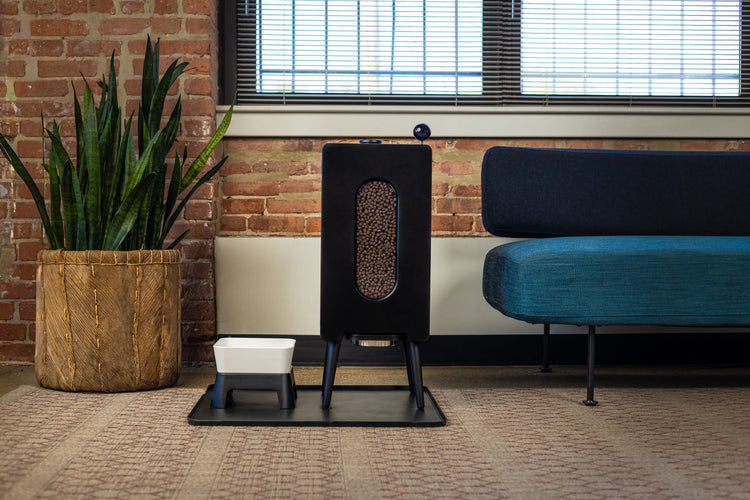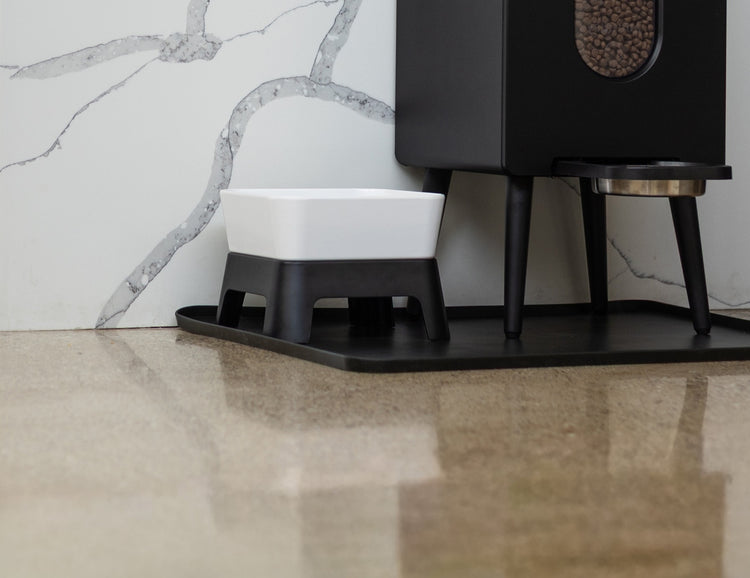Will a Raw Diet Help My Dog Lose Weight? Exploring the Benefits of Feeding Raw
- Houndsy
Table of Contents
- Introduction
- Understanding Raw Diets
- Why Weight Management is Important
- Will a Raw Diet Help My Dog Lose Weight?
- Practical Tips for Weight Loss on a Raw Diet
- Addressing Common Concerns
- Conclusion
- FAQ
Introduction
Have you ever looked at your furry friend and wondered if their weight is affecting their health? According to a recent study, about 56% of dogs in the United States are classified as overweight or obese. This alarming statistic emphasizes the importance of maintaining a healthy weight for our beloved pets, as excess weight can lead to serious health issues such as joint problems, diabetes, and decreased lifespan. As devoted dog owners, it’s our responsibility to ensure that we provide the best nutrition for our pets, which often leads to the question: will a raw diet help my dog lose weight?
In this blog post, we will delve into the benefits of a raw diet, how it can facilitate weight loss for dogs, and practical tips for transitioning your dog to this diet. By the end of this article, you will have a clearer understanding of how a raw diet can contribute to your dog’s health and weight management, along with actionable steps to implement this dietary change. We invite you to reflect on your own pet’s feeding routine and consider whether the raw diet could be a beneficial option for them.
Understanding Raw Diets
What is a Raw Dog Food Diet?
A raw dog food diet typically consists of uncooked meat, bones, fruits, and vegetables. This diet aims to mimic what dogs would naturally eat in the wild, emphasizing raw, high-quality ingredients that promote optimal health. Proponents of raw feeding argue that this diet can lead to improved digestion, healthier coats, and better weight management.
Types of Raw Diets
There are several variations of raw diets, including:
- Raw Meat-Based Diets (RMBDs): These focus primarily on fresh meat and may include organs and bones.
- Pre-Made Raw Diets: Commercially prepared raw meals that come frozen or freeze-dried, providing convenience for pet owners.
- Homemade Raw Diets: Recipes that allow pet owners to create balanced meals for their dogs at home.
Key Nutritional Components
Feeding a raw diet ensures that your dog receives essential nutrients in their natural form. Key components include:
- Proteins: Vital for muscle development and energy.
- Fats: Provide energy and support cell structure.
- Vitamins and Minerals: Crucial for overall health and immune function.
- Fiber: Helps with digestion and satiety.
Why Weight Management is Important
Maintaining a healthy weight is essential for your dog’s overall well-being. Being overweight can lead to various health issues, including:
- Joint Problems: Excess weight puts additional strain on joints, potentially leading to arthritis.
- Diabetes: Overweight dogs are more susceptible to insulin resistance.
- Reduced Lifespan: Obesity can shorten a dog's life by several years.
Conversely, achieving and maintaining a healthy weight can enhance your dog’s quality of life, increase their energy levels, and improve their longevity.
Will a Raw Diet Help My Dog Lose Weight?
Benefits of a Raw Diet for Weight Loss
- Higher Protein Content: Raw diets are typically rich in protein, which can aid in fat loss while preserving lean muscle mass. Protein has a higher thermic effect compared to carbohydrates, meaning your dog will burn more calories digesting protein.
- Lower Carbohydrate Intake: Many commercial dog foods, especially kibble, contain high levels of carbohydrates that can contribute to weight gain. A raw diet minimizes these unnecessary fillers, leading to better weight control.
- Improved Satiety: Raw diets can help dogs feel fuller for longer due to their higher protein and fiber content, reducing the likelihood of overeating.
- Better Nutrient Absorption: Raw diets allow for improved digestion and nutrient absorption, which means your dog will receive more of the benefits from the food they consume.
- Natural Caloric Restriction: By feeding raw, you can control the caloric content more effectively, allowing for better management of portion sizes.
Transitioning to a Raw Diet
Transitioning your dog to a raw diet should be done gradually to avoid gastrointestinal upset. Here are some steps to consider:
- Consult Your Veterinarian: Before making any significant dietary changes, it’s crucial to discuss your plans with your veterinarian, particularly if your dog has underlying health issues.
- Start Slow: Begin by incorporating small amounts of raw food into your dog’s current diet. Gradually increase the proportion of raw food over several days or weeks.
- Monitor Your Dog’s Response: Keep an eye on your dog’s stools, energy levels, and overall health during the transition period. Adjust the diet as necessary based on their reactions.
- Maintain Variety: To ensure a balanced diet, provide a variety of protein sources (beef, chicken, turkey, fish) and include fruits and vegetables.
- Use a Feeding Calculator: To determine the appropriate portion sizes, consider using a feeding calculator that factors in your dog’s weight, age, and activity level.
Practical Tips for Weight Loss on a Raw Diet
Portion Control
Accurate portion control is vital when feeding a raw diet to manage your dog’s weight effectively. A general guideline is to feed your dog 2-3% of their ideal body weight per day, adjusting based on their activity level and weight loss progress.
Healthy Treats
While it’s tempting to give treats during training or as rewards, it’s essential to choose low-calorie options. Consider using fruits and vegetables, such as carrot sticks or apple slices, as healthy alternatives.
Incorporate Fiber
Adding fiber to your dog’s diet can enhance satiety and help with weight loss. Consider incorporating vegetables like green beans or pureed pumpkin to meals.
Increase Exercise
In addition to dietary changes, increasing your dog’s activity level is crucial for weight loss. Aim for at least 30 minutes of exercise daily, which can include walks, playtime, or interactive toys that encourage movement.
Addressing Common Concerns
Is a Raw Diet Safe?
One of the primary concerns surrounding raw diets is the risk of bacterial contamination. However, proper handling and hygiene practices can mitigate these risks. Always wash your hands, clean your dog's feeding area, and store raw food correctly to prevent cross-contamination.
Nutritional Balance
Ensuring that your dog receives a balanced diet is essential. If you choose to prepare homemade raw meals, consider consulting with a veterinary nutritionist to formulate a balanced diet that meets your dog’s needs.
Cost Consideration
Feeding a raw diet may be more expensive than kibble; however, the long-term health benefits and potential savings from reduced vet bills due to better overall health can outweigh the initial costs.
Conclusion
Transitioning to a raw diet can be a beneficial approach for helping your dog lose weight and improve their overall health. With higher protein content, lower carbohydrates, and improved nutrient absorption, a raw diet addresses many of the challenges associated with weight management in dogs. By implementing portion control, selecting healthy treats, and maintaining an active lifestyle for your dog, you can support their weight loss journey effectively.
Are you ready to explore how a raw diet could enhance your dog's feeding experience? Remember, the Houndsy Kibble Dispenser can help streamline your feeding routine while ensuring that your pet receives the nutrition they deserve. Order now: Houndsy Kibble Dispenser.
FAQ
1. Can all dogs eat a raw diet?
Not all dogs may thrive on a raw diet. It's essential to evaluate your dog's health needs and consult your veterinarian before making any dietary changes.
2. How long does it take for a dog to lose weight on a raw diet?
Weight loss varies depending on the individual dog, but a safe guideline is to aim for 1% of body weight loss per week. Consistent monitoring and adjustments to the diet will help achieve goals.
3. What are some good protein sources for a raw diet?
Good protein sources include beef, chicken, turkey, lamb, and fish. It’s beneficial to rotate protein sources to ensure a varied and balanced diet.
4. How can I tell if my dog is at a healthy weight?
You should be able to feel your dog’s ribs without excess fat covering them. Additionally, viewing your dog from above should reveal a slight waist.
5. Can I mix raw food with kibble?
Mixing raw food with kibble is not generally recommended, as the digestion rates differ between the two. It's best to choose one feeding method for optimal digestion.












